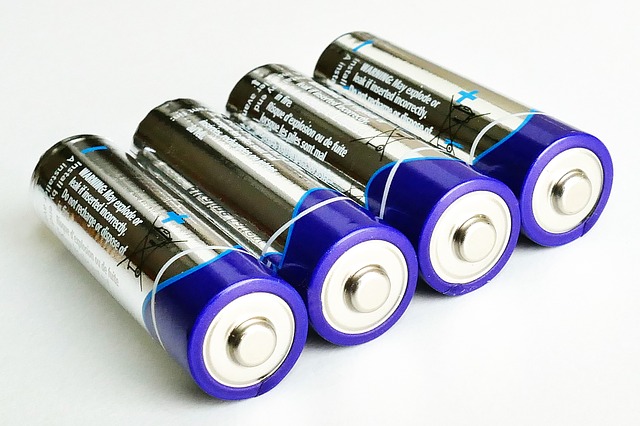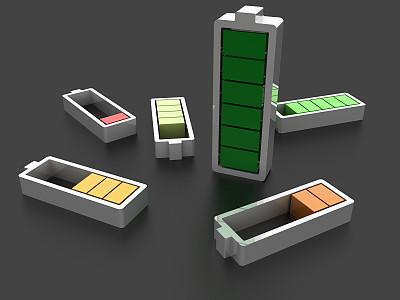High Endurance Rechargeable Lithium-Ion Battery
Aug 19, 2019 Pageview:1631
A lithium-ion battery or better known as Li-on battery is a type of rechargeable battery that is more commonly used in portable electronics and electronic vehicles.
In this type of batteries, lithium ions move from the negative electrode during discharge and back when charging. Li-ion battery uses an intercalated lithium compound as one electrode material, compared to the metallic lithium used in a nonrechargeable lithium battery.
The batteries contain high energy density and low self-discharge. However, they are highly flammable because they contain a flammable electrolyte and if damaged or charged incorrectly can lead to explosions and fires.
Analysis of High Endurance rechargeable lithium-ion battery 2019
Lithium-ion battery market was estimated valued over USD 33 billion in 2019 and was anticipated to expand over by 11% by 2025. This is mainly caused by the increasing customer power to purchase, as well as the continuous decline in electric vehicles, where this type of battery is most commonly used.
In the heat of global warming and the countries are pressured to produce less carbon, there are stringent regulations that are implemented to limit carbon emissions across the transportation sector. This is also another factor that might impact the industry growth.
Not only that, the industrial application segment was valued over USD 2 billion in 2019. This is predicted to increase due to growing concerns toward workers safety along with long cycle life. Long warranty period along with enhanced operational life will boost the installation of these systems. In addition, increasing demand for electro mobility across the logistic and supply chain industry will enhance the industrial landscape.
The cathode in a lithium-ion battery is anticipated to exceed USD 20 million by 2025. Some of the features that will drive the demand for new chemistry will be short discharge time, low maintenance, along with long service life.
How to choose high endurance lithium-ion battery
There is various type of lithium-ion batteries, that brings their own set of pro and weakness. The list of varieties can be found below:
1.Lithium Cobalt Oxide – LCO
This is one of the most popular types of batteries that are commonly found in phones, mobiles, laptops, and digital camera. The battery consists of cobalt oxide cathode and a graphite carbon anode. The cathode has a layered structure and during discharge, lithium-ion moves away to the cathode. On charge, this flow reverses back.
The drawback of this type of battery is its short life span, low thermal ability, and limited load capabilities. Not only that, this battery is losing favor to Li- Manganese batteries due to the high cost of production that LCO has.
2.Lithium Manganese – LMO
The architecture of the battery forms a three-dimensional spinel layer structure that improves ion flow on the electrode, which results in lower internal resistance and improved current handling. Another advantage of this type of battery is high thermal stability and enhanced safety.
However, this type of battery has very limited recharge cycle. The capacity of this type of battery is also one third lower than Li-cobalt.
3.Lithium Nickel Manganese Cobalt Oxide – NMC
This is one of the most successful in Li-ion system. These type of batteries can be tailored to serve as energy cells or power cells.
By combining nickel and ion manganese, nickel will serve as a high specific energy power source. Although it has poor stability, manganese will balance it up. The three active material; nickel manganese and cobalt can be easily blended to suit a wide range of applications for automotive and energy storage systems.
NMC is usually used for power tools, such as e-bikes and other electrical powertrains. This battery is the only one who has stable performance across all factors; life span, cost, specific energy, and safety.
4.Lithium-Ion Phosphate - LFP
These type of batteries are more tolerant to full charge conditions and is less stressed compared to another type of batteries. However, its voltage is normally lower. Same as all batteries, the cold temperature reduces the performance and elevated high storage reduces its life span.
This type of battery has a higher discharge rate than most of the other batteries. This could have been taken care of by buying higher quality cells or using much more sophisticated control electronics, which will, in turn, raise the cost of production. Most manufacturers would want to avoid that.
The battery is extremely sensitive moisture and will only deliver 50 cycles.
However, it excels in safety because this type of battery tends to be much more stable than their counterparts. It also contains high specific power.
5.Lithium Nickel Cobalt Aluminum Oxide – NCA
It shares similarity with NMC batteries because of good specific power, high specific energy, and a long lifespan. However, this type of battery is not really safe and it has a high production cost. Even tho in the recent development there is the addition of aluminum to its component to make it much more stable.
How to maintain the high endurance of the lithium-ion battery
The lithium battery works on the movement of ion positive and ion negative electrodes. In cycling, elevated temperature and aging decrease the performance of the batteries over time. Most manufacturers specified that the life span of the products ranges from 300 – 500 discharge or charge cycles.
As a user, when charging the battery, it is better to lower the charge voltage. Keeping the battery full at a higher temperature also needs to be avoided. Lithium-ion suffers from stress when exposed to heat, as well as from keeping the cell charging at a higher voltage. 30 degrees Celcius is considered high temperature for most of the lithium-ion batteries, as well as 4,10 V/cell, is deemed as high voltage.
Because of this reason as well, users need to avoid using ultra-fast chargers that claim to be able to charge within an hour.
- Prev Article: You should know more about home-made 18650 battery holder
- Next Article: Analysis of lithium battery price trend
Leave Message
Hottest Categories
-
Hottest Industry News
-
Latest Industry News











